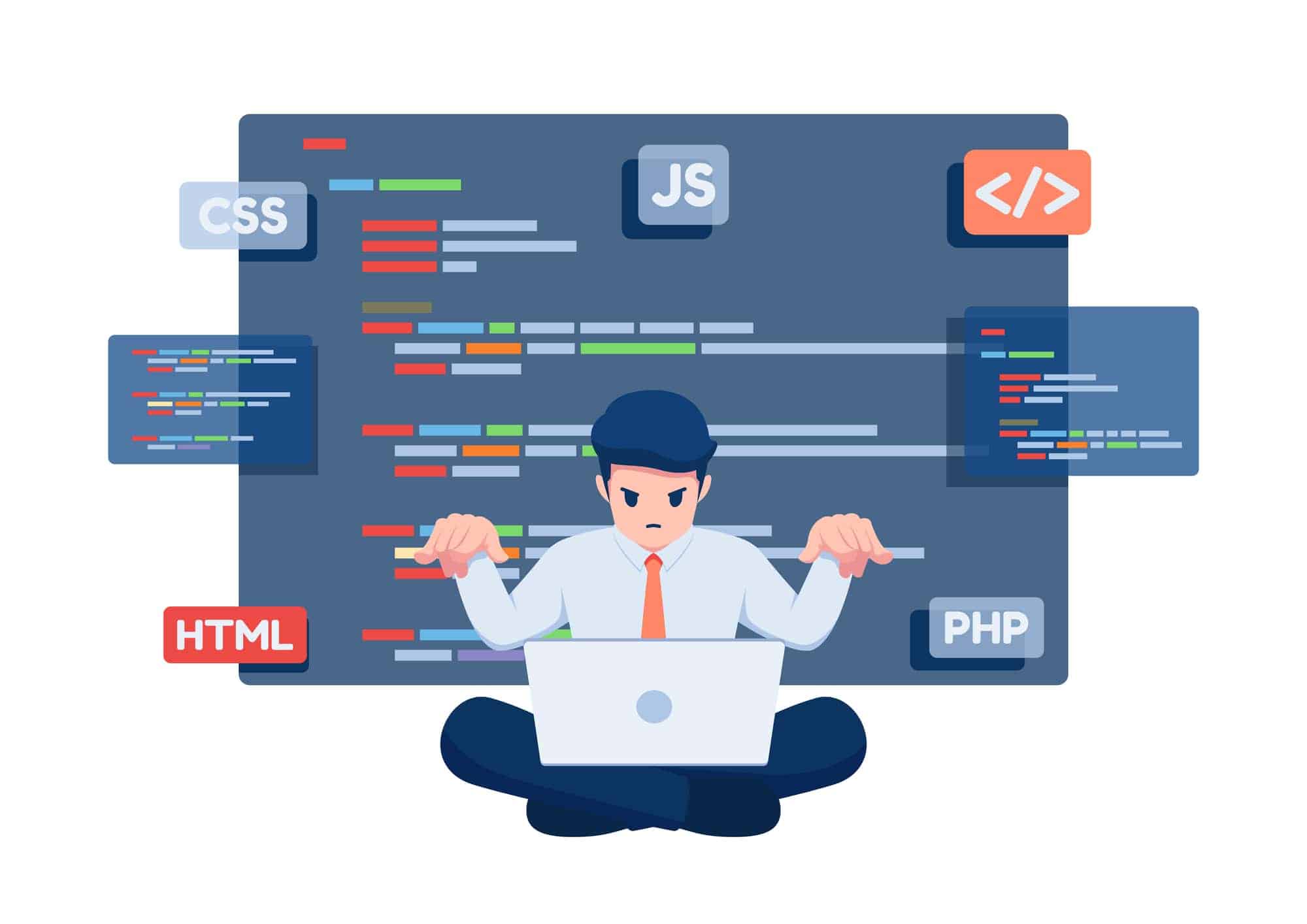Scrapy is more than just a tool; it’s a Python library that streamlines the process of web scraping, making it accessible to beginners while remaining robust enough for seasoned developers. With Scrapy, you can automate the extraction of valuable data from websites, saving you hours of manual labor.
But what sets Scrapy apart? It offers a structured approach to web scraping, allowing you to define the data you want and navigate through websites systematically. Scrapy can crawl websites, follow links, and extract information from web pages efficiently. Whether you’re interested in gathering product prices, news articles, or any other data, Scrapy is your go-to solution.
Prerequisites
Before we dive into Scrapy’s wonders, let’s cover the essentials. To embark on this journey, all you need is a basic understanding of Python and some familiarity with web concepts like HTML and CSS. If you’re already comfortable with Python, you’re well on your way to becoming a Scrapy pro.
No need to worry if you’re not a Python expert yet; we’ll guide you step by step, ensuring that you grasp each concept along the way. By the end of this tutorial, you’ll be equipped with the knowledge and skills to harness the full potential of Scrapy.
So, are you ready to explore the world of web scraping and unlock the vast universe of data available online? Let’s get started on this exciting adventure with Scrapy!
Setting Up Your Scrapy Environment
Step 1: Install Scrapy and Start Your Project
Before you can start scraping, you’ll need to install Scrapy. Don’t worry; it’s a breeze. Open your terminal or command prompt and run the following command:
pip install scrapy
Once Scrapy is installed, you can create your first Scrapy project. Think of a Scrapy project as a container for all your web scraping endeavors. Use the following command to kickstart your project:
scrapy startproject myproject
Replace “myproject” with your project’s name. Congratulations, you’ve just set up your Scrapy project!
Step 2: Create Your Spider
Now, let’s talk about spiders—not the eight-legged kind, but the ones that crawl websites. In Scrapy, a spider is a script that defines how to navigate and extract data from a particular website. To create a spider, use this command:
scrapy genspider myspider example.com
Replace “myspider” with your spider’s name and “example.com” with the website you want to scrape. This command generates a spider template for you to customize.
Step 3: Parse HTML Content
Spiders are like detectives; they need to know where to find the information they’re looking for. Scrapy uses XPath or CSS selectors to parse HTML content. You can extract data from specific elements by writing parsing rules in your spider’s code.
Here’s an example of how to extract the text from all the <h1> tags on a webpage:
def parse(self, response):
headings = response.xpath('//h1/text()').getall()
for heading in headings:
yield {
'heading_text': heading
}
Step 4: Extract Data in CSV
Now that you’ve collected valuable data using Scrapy, it’s time to save it for analysis or sharing. Scrapy makes it simple to export your data in various formats. For instance, you can easily export your scraped data to a CSV file with a single command:
scrapy crawl myspider -o data.csv -t csv
Replace “myspider” with the name of your spider and “data.csv” with your desired output file name.
With these steps, you’re off to a strong start in your web scraping journey with Scrapy. Stay tuned for more advanced techniques in the following sections!
Organizing Your Scrapy Project Structure

Imagine your Scrapy project as a digital workshop where you craft data extraction tools. To maintain order and efficiency, you’ll want a well-structured project. Scrapy offers a predefined project structure that you can follow. When you create a Scrapy project using the startproject command, it generates a directory with several subdirectories and files. Here’s a brief overview:
- spiders: This directory houses your spiders, the web crawlers that fetch data from websites. Each spider is a Python script with its rules for scraping.
- items.py: Define the data structure you want to scrape and store. Think of it as a blueprint for your scraped items.
- middlewares.py: Customize the request and response handling process using middlewares. For example, you can add user-agent rotation to avoid being detected as a bot.
- pipelines.py: Specify how scraped data should be processed and stored. You can define pipelines to save data to databases, export it to CSV, or perform other actions.
- settings.py: Configure your Scrapy project’s settings, such as user-agent strings, download delays, and more.
By organizing your project using this structure, you’ll find it easier to manage your spiders, data, and project settings. It also facilitates collaboration if you’re working with a team.
Effective Project Management and Best Practices
Project management isn’t just for corporate offices; it’s vital for your Scrapy projects too. Here are some best practices to keep your projects on track:
- Version Control: Use a version control system like Git to track changes and collaborate with others. Platforms like GitHub and GitLab are excellent for hosting your Scrapy projects.
- Documentation: Maintain thorough documentation for your spiders and project. Include information about spider usage, data structure, and any special instructions.
- Error Handling: Implement robust error handling mechanisms in your spiders. Make sure your project can gracefully handle website changes and exceptions.
- Regular Updates: Periodically update your Scrapy framework and dependencies to benefit from new features and bug fixes.
- Scalability: Design your spiders to be scalable. Consider how they will handle larger datasets and more complex scraping tasks.
- Respect Robots.txt: Always adhere to a website’s
robots.txtfile to avoid scraping prohibited content.
Advanced Scrapy Web Scraping Techniques
As you become more familiar with Scrapy, it’s time to step up your game and explore advanced techniques that will make you a true web scraping ninja. In this section, we’ll dive into strategies to enhance your Scrapy skills, avoid getting blocked, and master web crawling.
Enhancing Your Scrapy Skills
Web scraping isn’t always a walk in the park. Websites have defenses in place to detect and block scrapers. Fortunately, Scrapy equips you with tools to navigate this obstacle course. Here’s how to stay under the radar:
- User-Agent Rotation: Websites often identify scrapers by examining user-agent strings. Rotate user-agents to mimic human browsing behavior. For example:
USER_AGENT_LIST = [
'Mozilla/5.0 (Windows NT 10.0; Win64; x64) AppleWebKit/537.36 (KHTML, like Gecko) Chrome/58.0.3029.110 Safari/537.36',
# Add more user-agents here
]
# In settings.py
DOWNLOADER_MIDDLEWARES = {
'scrapy.downloadermiddlewares.useragent.UserAgentMiddleware': None,
'myproject.middlewares.RandomUserAgentMiddleware': 400,
}
- IP Rotation: Rotate IP addresses using proxy servers to avoid being detected as a scraper. Numerous proxy services are available for this purpose.
- Respect Robots.txt: Always follow the rules specified in a website’s
robots.txtfile. Disobeying these rules can lead to being blocked.
Web Crawling with Scrapy
While simple scraping extracts data from individual web pages, web crawling takes it a step further. With Scrapy, you can create spiders that follow links and crawl entire websites. This is particularly useful for gathering data from multiple pages or categories of a website.
For instance, imagine you’re scraping an e-commerce site. Instead of scraping one product page at a time, you can set up your spider to follow links to other product pages, thus scraping the entire catalog. Here’s an example of how to do this:
class MySpider(scrapy.Spider):
name = 'myspider'
start_urls = ['<https://example.com>']
def parse(self, response):
# Extract data from the current page
# ...
# Follow links to other pages
for next_page in response.css('a.next-page::attr(href)'):
yield response.follow(next_page, self.parse)
Web crawling allows you to build comprehensive datasets efficiently, making it a valuable skill for data harvesting projects.
Parallel Web Scraping with Scrapy
In your web scraping journey, there will be moments when you need to collect data from multiple sources concurrently. Scrapy empowers you to do just that with parallel web scraping capabilities. Let’s explore how you can harness the full potential of Scrapy in parallel scraping, debugging, and customization.
Using Scrapy for Parallel Web Scraping
Imagine you’re tasked with scraping data from numerous websites, each containing a vast amount of information. Performing this task sequentially could be time-consuming and inefficient. Scrapy offers a solution: parallel web scraping. This means you can run multiple spiders simultaneously, significantly speeding up the data collection process.
For instance, let’s say you want to scrape data from several news websites. With Scrapy’s parallel scraping, you can create individual spiders for each site and run them concurrently. This approach reduces the time it takes to collect data from multiple sources.
Ease Debugging: Separation of Concerns with Item Pipelines
When you’re scraping data from multiple sources in parallel, debugging can become challenging. However, Scrapy simplifies this process with the concept of item pipelines. Item pipelines allow you to process scraped data in a controlled and modular fashion.
By separating concerns using item pipelines, you can isolate and debug issues specific to each spider independently. This not only streamlines the debugging process but also makes your Scrapy project more maintainable.
Hyper Customization with Middlewares
Scrapy’s middlewares are your secret weapons for fine-tuning and customizing your web scraping experience. Middlewares are processing steps that can be applied to requests and responses as they flow through the Scrapy engine. You can use middlewares to implement a wide range of functionalities, such as user-agent rotation, proxy rotation, and content transformation.
For example, let’s say you’re scraping e-commerce websites that use JavaScript to load product details dynamically. You can create a custom middleware to handle JavaScript rendering and extract data seamlessly.
Scraping Dynamic-Content Websites
As the web evolves, websites are increasingly using dynamic content loading techniques. Traditional web scrapers may struggle with dynamic content, but not Scrapy. Scrapy allows you to scrape websites with dynamically generated content effortlessly.
For instance, you might want to scrape a site that loads data via AJAX requests or uses client-side rendering frameworks like React or Angular. With Scrapy’s flexibility and support for dynamic content, you can access and scrape this data without breaking a sweat.
By mastering parallel scraping, utilizing item pipelines, leveraging middlewares, and conquering dynamic-content websites, you’ll become a Scrapy pro. These advanced techniques will empower you to handle complex web scraping tasks efficiently and effectively.
Mastering Scrapy Project Management

Once you’ve embraced the power of Scrapy, it’s time to elevate your game further by mastering project management. In this section, we’ll explore strategies for scaling your Scrapy project and optimizing your web crawls for speed and efficiency.
Scaling and Optimization
As your web scraping ambitions grow, you might find yourself needing to collect data from a multitude of websites. Scaling your Scrapy project is essential to manage this increased workload efficiently. Here are some strategies to consider:
- Parallel Execution: Building on the concept of parallel scraping, you can design your Scrapy spiders to run concurrently. This approach dramatically reduces the time it takes to collect data from multiple sources.
- Distributed Scraping: If the scale of your project is enormous, consider deploying multiple Scrapy spiders on different machines or servers. Tools like Scrapy Cluster enable you to manage distributed scraping seamlessly.
- Scheduled Scraping: Implement a scheduling system to scrape websites at specific intervals, ensuring you keep your data up to date without constantly running spiders.
- Prioritization: Prioritize the order in which your spiders crawl websites. Some data might be more critical and require more frequent updates than others.
Optimizing Your Scrapy Crawls for Speed and Efficiency
Efficiency is the name of the game in web scraping. Optimizing your Scrapy crawls can significantly impact the performance and resource usage of your project. Here’s how to do it:
- Crawl Delay: Configure a crawl delay in your settings to prevent overloading websites with requests. Respect the politeness policy specified in the
robots.txtfile. - Throttle Requests: Implement request throttling to limit the number of concurrent requests. This avoids overwhelming servers and getting banned.
- Use Efficient Selectors: Optimize your spider’s selectors to pinpoint the data you need precisely. Overly broad selectors can result in unnecessary data extraction, slowing down your crawl.
- Caching: Employ caching mechanisms to store and reuse scraped data. This reduces the need for repeated requests to the same pages.
- Connection Pooling: Enable connection pooling to reuse HTTP connections when sending requests, reducing the overhead of creating new connections for each request.
By scaling your Scrapy project effectively and optimizing your web crawls, you’ll not only boost performance but also ensure your project’s sustainability in the long run.
Data Storage and Export

Now that you’ve mastered the art of web scraping with Scrapy, it’s time to understand how to store and export the valuable data you’ve collected. In this section, we’ll explore various options for storing scraped data, from databases to other formats, empowering you to manage and utilize your data effectively.
Storing Scraped Data: Databases and Beyond
One of the most robust ways to store your scraped data is by using databases. Databases provide structured storage, making it easy to search, retrieve, and analyze your data. Some common database choices for storing scraped data include:
- SQLite: A lightweight and file-based database, ideal for small to medium-sized projects.
- MySQL: A popular open-source relational database management system, suitable for larger projects with more complex data structures.
- PostgreSQL: Another powerful open-source relational database system known for its advanced features and scalability.
- MongoDB: A NoSQL database that’s great for handling unstructured or semi-structured data.
- Redis: A fast, in-memory data store often used for caching and real-time analytics.
Exporting Data to Various Formats with Scrapy
Scrapy provides flexible options to export your scraped data in different formats, making it accessible for analysis and reporting. Here are some common export formats:
- CSV: Comma-Separated Values files are widely used for their simplicity and compatibility with spreadsheet software like Excel.
- JSON: JavaScript Object Notation is a lightweight data-interchange format, making it easy to read and write data in a structured way.
- XML: Extensible Markup Language is suitable for structured data representation and is commonly used in web services and configuration files.
- Excel: You can export your data directly to Excel spreadsheets for further analysis and reporting.
- Django ORM: If you’re working within a Django project, you can utilize the Django Object-Relational Mapping (ORM) to store data in your application’s database.
Examples and Practical Tips
Let’s consider an example where you’re scraping real estate listings. You can store the scraped data in a PostgreSQL database, allowing you to perform advanced queries like finding properties within a specific price range or location. Additionally, you can export a subset of this data to a CSV file for sharing with colleagues or clients.
Statistics show that businesses that effectively analyze and utilize their data gain a competitive advantage. According to a study by McKinsey & Company, data-driven organizations are 23 times more likely to acquire customers and six times more likely to retain them.
By implementing robust data storage strategies and utilizing Scrapy’s data export capabilities, you can leverage the insights gained from your scraped data to make informed decisions and gain a competitive edge.
Frequently Asked Questions (FAQs)
In this section, we’ll address some common questions that often arise when exploring the world of Scrapy. These answers will help you gain a better understanding of what Scrapy is, its current relevance, its use cases in Python, and any potential disadvantages.
What Does Scrapy Do?
Scrapy is a versatile web crawling and web scraping framework built specifically for Python. It empowers developers and data enthusiasts to extract data from websites with ease. With Scrapy, you can create customized spiders that navigate websites, scrape data, and store it for further analysis. In essence, Scrapy automates the process of collecting data from the web, making it an invaluable tool for data acquisition, research, and more.
Is Scrapy Still Used?
Absolutely! Scrapy continues to be widely used and appreciated in the web scraping community. It remains a reliable choice for data extraction tasks due to its robust features, scalability, and flexibility. Many organizations, researchers, and data professionals rely on Scrapy to gather information from the ever-expanding landscape of websites.
What Is Scrapy Python Used for?
Scrapy Python finds application in a variety of use cases:
- Data Mining: Scrapy is used to collect data for analysis, research, and insights. It’s instrumental in harvesting data from sources like e-commerce websites, news portals, and social media platforms.
- Competitive Intelligence: Businesses use Scrapy to monitor competitors’ websites, track pricing changes, and stay informed about market trends.
- Content Aggregation: Scrapy can be employed to aggregate content from multiple sources, creating comprehensive databases or news feeds.
- Research and Academia: Researchers and academics use Scrapy to gather data for their studies, enabling them to draw valuable conclusions and insights.
What Is the Disadvantage of Scrapy?
While Scrapy is a powerful tool, it’s essential to be aware of its limitations:
- Learning Curve: For newcomers to web scraping and Python, Scrapy may have a learning curve. However, with practice and resources, this can be overcome.
- Website Changes: Websites often undergo structural changes, which can break your Scrapy spiders. Regular maintenance and updates may be necessary to keep your spiders running smoothly.
- Ethical Considerations: It’s crucial to use Scrapy responsibly and ethically. Some websites have terms of service that prohibit scraping, and scraping sensitive or personal data can have legal implications.
Comparing Scrapy with Other Tools
As you embark on your web scraping journey, you might wonder how Scrapy stacks up against other popular tools like Beautiful Soup and Selenium. Let’s explore these comparisons to help you make informed choices in your data extraction endeavors.
Is Scrapy Better than Beautiful Soup?
Scrapy and Beautiful Soup serve different purposes in web scraping:
- Scrapy is a comprehensive web scraping framework that provides a complete solution for navigating websites, sending requests, and extracting data. It’s a robust choice for complex projects that require automation and scalability.
- Beautiful Soup, on the other hand, is a Python library focused on parsing and navigating HTML and XML documents. It’s excellent for parsing static web pages and extracting data but lacks Scrapy’s automation features.
To decide whether Scrapy is better than Beautiful Soup depends on your project requirements. If you need automation, handling of dynamic content, and crawling capabilities, Scrapy is the way to go. If you’re dealing with static HTML parsing only, Beautiful Soup may be more straightforward.
Is Beautiful Soup Faster than Scrapy?
The speed of web scraping depends on several factors, including the complexity of the website, your code efficiency, and the tool’s design. Scrapy is known for its efficiency in handling multiple requests simultaneously, making it faster for large-scale web scraping tasks. Beautiful Soup, being a parsing library, may be faster for simpler parsing tasks but lacks Scrapy’s overall speed and performance in web crawling scenarios.
Again, the choice between the two depends on your specific needs. If speed and scalability are critical, especially for scraping multiple pages from different websites, Scrapy is the better choice.
Is Scrapy Better than Selenium?
Scrapy and Selenium serve different purposes:
- Scrapy is primarily used for web scraping, focusing on data extraction and automation. It doesn’t render JavaScript by default but excels in navigating websites, sending requests, and parsing responses efficiently.
- Selenium, on the other hand, is designed for web testing and automation of web interactions, including those that require JavaScript execution. It can scrape data from websites that heavily rely on JavaScript, but it may be slower for straightforward scraping tasks compared to Scrapy.
The choice between Scrapy and Selenium depends on your project’s requirements. If you need to scrape data from JavaScript-heavy websites or interact with web elements as a user would, Selenium is a suitable choice. For traditional web scraping tasks with efficiency and automation in mind, Scrapy is the better option.
Conclusion
As you reach the end of this exploration into the world of Scrapy, it’s essential to reflect on the benefits you’ve uncovered and consider the next steps in your web scraping journey.
Summary of Scrapy Benefits
Throughout this article, you’ve delved into the remarkable capabilities of Scrapy, and here’s a concise summary of its key benefits:
- Powerful Web Scraping: Scrapy empowers you to extract data from websites quickly and efficiently, making it a valuable tool for data collection.
- Flexibility and Customization: With Scrapy, you can tailor your web scraping projects to your specific needs, from defining the data you want to scrape to customizing spider behavior.
- Parallel Web Scraping: Scrapy allows you to run multiple spiders concurrently, drastically reducing the time required for large-scale data collection.
- Efficient Data Storage: You’ve learned how to store and export scraped data effectively, enabling you to manage and utilize the information you gather.
- Robust Project Management: Scrapy provides strategies for scaling your projects and optimizing web crawls, ensuring efficiency and sustainability.
Next Steps in Your Scrapy Journey
Now that you’ve grasped the fundamentals of Scrapy, where should you go from here? Consider these next steps in your Scrapy journey:
- Explore Scrapy Documentation: Dive deeper into Scrapy’s official documentation. It’s a treasure trove of information and examples that will help you master this web scraping framework.
- Experiment and Practice: The best way to learn is by doing. Continue to build and refine your Scrapy projects. Experiment with different websites and challenges to expand your expertise.
- Join the Scrapy Community: Connect with other Scrapy enthusiasts by joining online forums, discussion groups, and social media communities. You’ll gain valuable insights and support from experienced web scrapers.
- Stay Updated: Web scraping techniques and technologies evolve over time. Stay updated with the latest developments in web scraping and data extraction.
- Explore Advanced Topics: As you become more comfortable with Scrapy, consider exploring advanced topics such as handling authentication, dealing with CAPTCHAs, and scraping JavaScript-rendered pages.
Web scraping with Scrapy is a valuable skill that can open doors to a world of data-driven possibilities. Whether you’re pursuing a career in data science, web development, or simply satisfying your curiosity, Scrapy equips you with the tools to navigate and extract valuable insights from the web.
Your Scrapy journey is just beginning, and the web is teeming with data waiting to be discovered. Embrace the power of Scrapy and embark on your path to becoming a web scraping expert.

